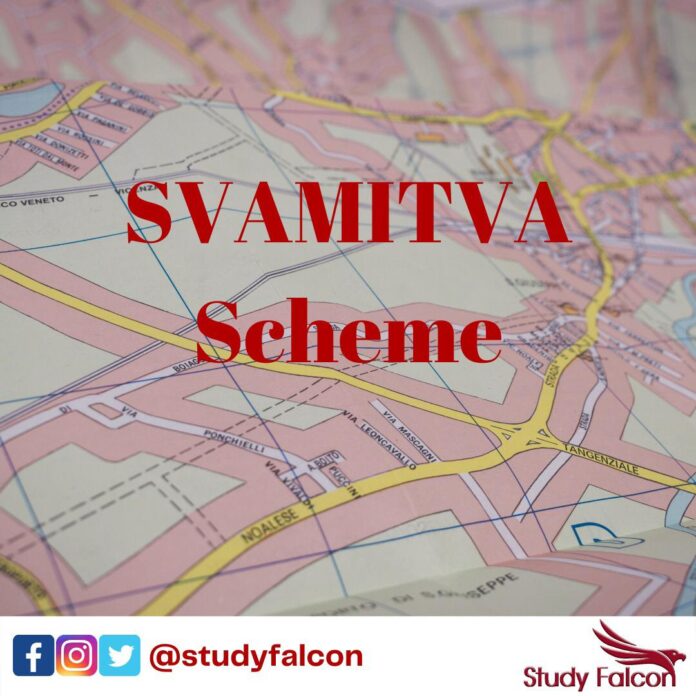SVAMITVA scheme, short for ‘Survey of Villages and Mapping with Improvised Technology in Village Areas’ scheme, was launched by PM Shri Narendra Modi in April, 2020. This scheme is also referred to as the Property Cards Scheme as it will enable nearly one lakh property holders to download their property cards through a phone SMS and allow villagers to use property as a financial asset for taking loans and other financial benefits. This historic move will transform rural India. Being able to get loan during the pandemic is a blessing, since a lot of people are in dire need of money.
According to PMO, 753 villages across six states are beneficiaries of this scheme. Maximum number of villages are from Uttar Pradesh (346 villages) followed by 221 from Haryana, 100 from Maharashtra, 50 from Uttarakhand, 44 from Madhya Pradesh and 2 from Karnataka. All these 6 states signed a MoU with Survey of India for drone survey of rural areas and application of the scheme. The respective state governments will also facilitate in physical distribution of the property cards as some people may not be able to download them if they do not have mobile phones or due to other various reasons.
SVAMITVA scheme was launched with the aim of updating rural land records, providing record of rights to village households and issue property cards. According to PM Shri Narendra Modi, the beneficiaries now will have a right, a legal document of owning their houses. The country has taken another major step towards an AtmaNirbhar Bharat, as this scheme helps in making rural India self-reliant. SVAMITVA is a central scheme of the Ministry of Panchayati Raj and Rural Development and will be implemented across the country over the next four years, covering around 6.62 lakh villages. The property card will clear the way to buy and sell property without any dispute for the villagers. The scheme focuses on mapping rural-inhabited lands with the help of drones as land records are inaccurate and also do not exist for vast areas across India. Even though 60 per cent of the country lives in rural areas, villagers do not have ownership documents of their homes despite records being kept of agricultural land. These land records are crucial for Gram Panchayats that presently struggle with generating revenues, especially through property tax, who can better invest in the needs of local communities.
According to the 2018 Economic Survey, only 19 per cent of potential property tax was being collected by Gram Panchayats. As once ownership of property becomes easy to determine and prove, its prices will also be fixed. Then the property cards can be used for taking loans and improving the tax regime at the Panchayati level. This effort may bring about more financial stability for rural India, give accurate land records that can be used for planning, help in calibrating property tax and give a structural alternative for legal matters in property disputes.
This is the first time in the history of India that such a large-scale exercise which involves modern technology is being carried out to benefit millions of rural property owners. Around one lakh villages in UP, Haryana, Maharashtra, Madhya Pradesh, Uttarakhand and Karnataka, and a few border villages of Punjab and Rajasthan will be covered in the pilot phase of 2020-21.










